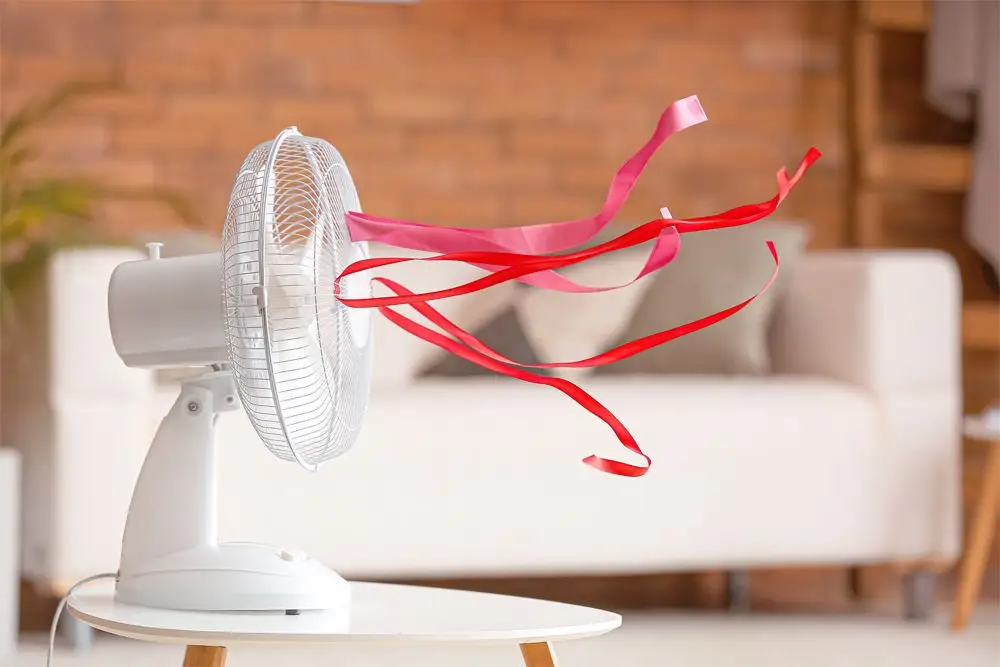Are you tired of stuffy indoor air?
That discomfort can hurt your mood. Electric fans can bring relief and help you enjoy a healthier, more comfortable space.
Electric fans can reduce indoor temperature, improve air movement, and even filter dust and germs. They also help you save energy by lowering HVAC usage.
This article will explore how they enhance thermal comfort, optimize airflow, save costs, and add beauty to your space.
Let’s see how electric fans solve these key points.
This guide covers thermal comfort, air purification, energy savings, portability, and versatility.
Keep reading to learn practical tips and insights that will help you get the best results.
1. Enhancing Thermal Comfort and Health
Feeling sweaty on hot days?
That heat can ruin focus and well-being.
A reliable fan eases that discomfort, so you stay cool, productive, and in better health.
Fans help our bodies cool by boosting sweat evaporation and lowering heat stress.
They also remove stale air, which supports respiratory health and lowers stress levels.
By improving air movement, fans create a gentle breeze that can enhance sleep quality and reduce irritability.
Improving Body Temperature and Mood
Electric fans speed up air circulation around you.
This airflow helps remove hot, moist air and replace it with cooler air from other parts of the room.
The result is a more refreshing atmosphere that lowers your internal warmth.
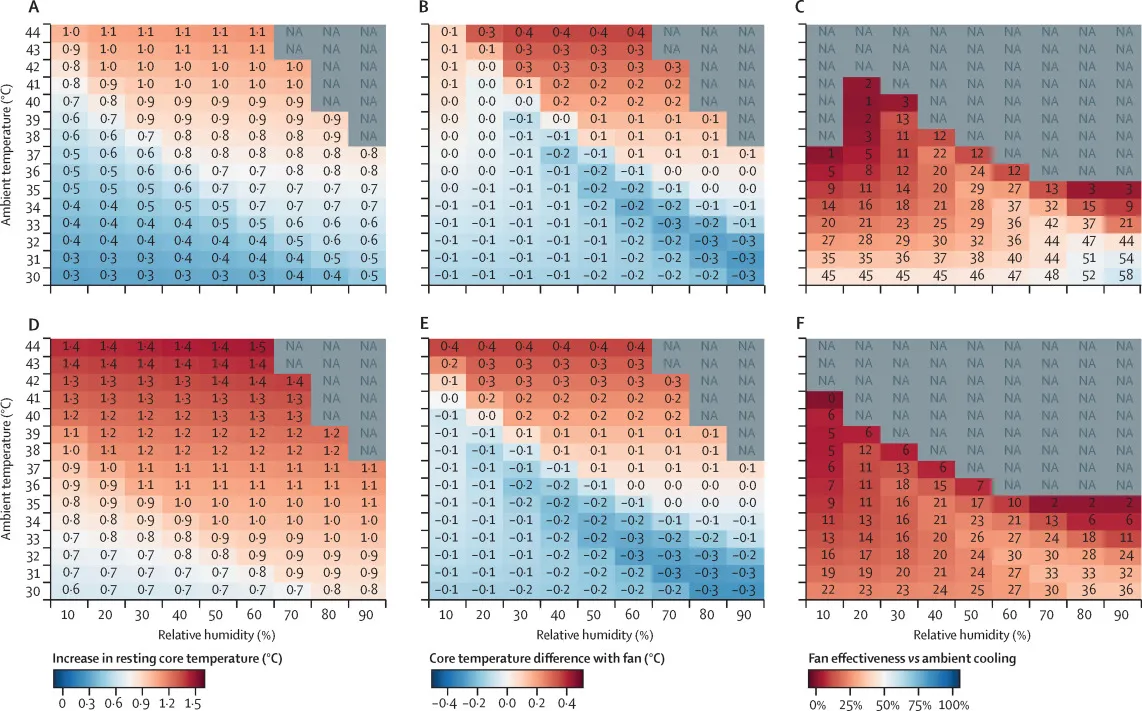
When your skin feels cooler, your mood usually improves.
This happens because feeling overheated can increase tension and make everyday tasks tougher.
With a fan running, you benefit from steady air movement and less sticky humidity.
Boosting Sleep Quality
A comfortable sleep environment is important.
If your bedroom is too warm, you may toss and turn all night. Electric fans lower room temperature, so you do not need to rely entirely on air conditioning.
Constant airflow also helps to prevent stagnant air pockets that can carry unpleasant odors or accumulate dust.
A relaxed body and a cool room make it easier to fall asleep and stay asleep longer.
Supporting Respiratory Health
Moving air can reduce the concentration of airborne irritants.
It can disperse allergens, dust, and other tiny particles that build up when there is no airflow.
This helps maintain clearer breathing passages, which is particularly helpful if you have mild sensitivities.
Also, less hot air means less sweating, so you are not as likely to feel sticky or clammy.
This can improve how you feel overall.
Table: Key Factors Affecting Thermal Comfort
| Factor | Description | Impact on Comfort |
|---|---|---|
| Temperature | Room’s average heat level | High temperature leads to sweating or stress |
| Humidity | Amount of moisture in the air | High humidity makes sweat evaporate less |
| Air Movement | Speed at which air circulates | More airflow enhances cooling via evaporation |
| Radiant Effects | Heat from direct sources (sun, appliances, etc.) | Can increase localized heat around occupants |
By managing these factors with a fan, you make the indoor environment less stuffy.
Better thermal comfort supports your overall health by reducing fatigue, boosting mood, and helping you tackle daily tasks with more energy.
2. Optimize Airflow and Purification
Do you ever notice stale air in corners of the room?
That can build up dust.
A fan helps by pushing fresh air throughout the space.
Fans create steady movement that improves ventilation.
This can reduce hot or cold spots and help dilute airborne pollutants and odors.
They can also work together with filters to limit dust and germs.
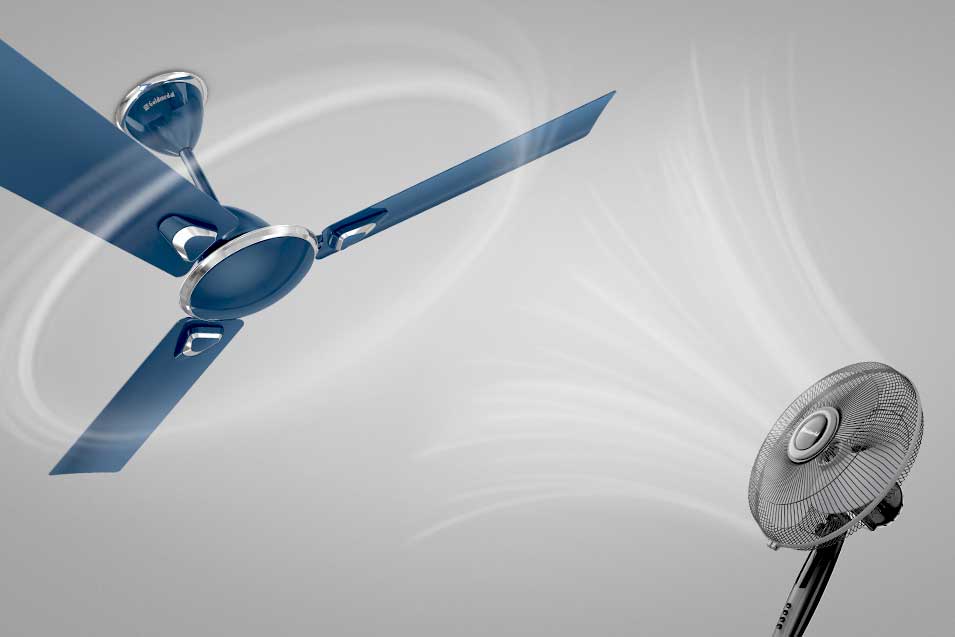
How Fans Contribute to Clean Air
Fans themselves are not heavy-duty air purifiers, but they help distribute air more evenly, which prevents pockets of stale air that can host allergens or bacteria.
Some modern fans include built-in filters that trap particles like dust or tiny debris.
Even if you have a basic fan, you can pair it with other filtration systems to improve indoor air quality.
By circulating cleaner air from one zone to another, the overall atmosphere in the room becomes fresher.
Strategies to Reduce Contaminants
You can place your fan near a window to pull in outside air or push out indoor air.
This is especially helpful when you are cooking or if you have chemical odors from household cleaners.
By directing airflow outward, you remove stale or polluted indoor air.
For an even cleaner experience, you may use fans with replaceable or washable filters.
That way, you tackle dust and reduce stuffiness.
If your space feels humid, a fan can help water vapor disperse more quickly, which lowers the chance of mold buildup.
Connecting Fans with HVAC
In many buildings, HVAC systems push warm or cool air through ducts.
Fans can help spread that conditioned air faster and farther.
If you place a fan in an area that does not receive strong airflow, it will move stale air away and bring in the cooler or warmer air you want.
This means more stable temperatures and less energy wasted by the HVAC system, as it does not have to run as often or as intensively.
By optimizing airflow, you also reduce the likelihood of dust settling in one spot.
An area with no circulation will gather dust, making it harder to clean.
When air moves, dust remains in motion until eventually pulled into filters or cleaned up.
This approach helps you keep surfaces tidier and lowers your exposure to allergens.
3. Energy Savings and Cost Benefits
Is your electricity bill too high? That can be frustrating.
A fan can help you reduce your reliance on large HVAC systems.
Fans allow higher air-conditioning setpoints and support natural ventilation.
They use less power than air conditioners and might cut costs by lowering total energy consumption. Over time, these savings can add up.
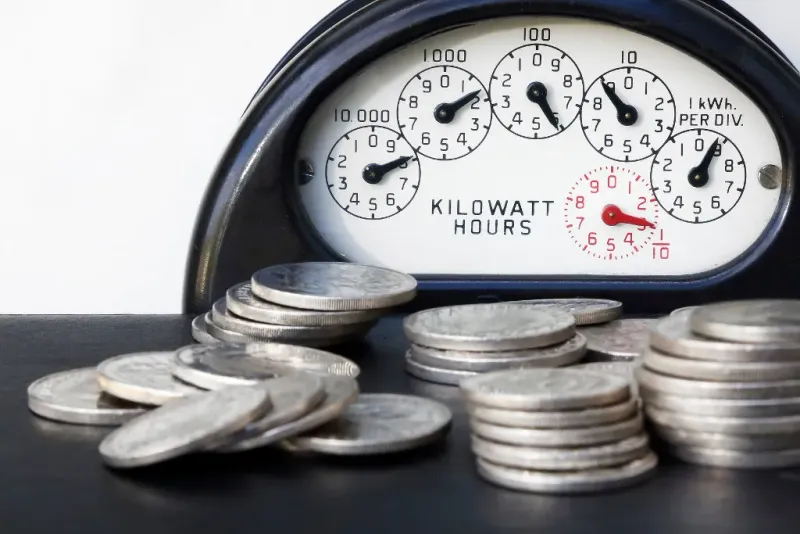
Ways Fans Save You Money
Electric fans use relatively little electricity compared to air conditioning units.
Running a fan can cost just a fraction of what it costs to run an AC all day.
You can raise your thermostat by a few degrees since the airflow cools your skin and makes you feel comfortable at a slightly higher indoor temperature.
That small adjustment translates into noticeable savings on your monthly bills.
Table: Typical Power Usage Comparison
| Appliance | Average Power Consumption | Approx. Cost per Hour* |
|---|---|---|
| Ceiling Fan | 15–90 W | $0.002–$0.010 |
| Desk Fan | 10–50 W | $0.001–$0.005 |
| AC (Window) | 500–1500 W | $0.06–$0.18 |
| AC (Central) | 3500 W+ | $0.42+ |
*Estimates vary by region and local electricity rates.
Long-Term Savings
Installing a fan can trim down the need for ductwork upgrades if you are constructing or renovating.
If air distribution becomes more effective with fans, you do not need oversized HVAC equipment, so you save on initial costs.
Maintenance is also cheaper.
A basic fan requires only occasional cleaning, while an AC system needs regular servicing, refrigerant checks, and potential part replacements.
That difference in upkeep can lead to consistent cost benefits year after year.
Environmental Impact
When you minimize the use of energy-intensive systems, you reduce your carbon footprint. Fans draw far less power, which helps lower greenhouse gas emissions.
This is important if you want to maintain an eco-friendly lifestyle.
Simple steps, like using fans in the morning or evening when outside air is cooler, let you rely less on air conditioning altogether.
Added Productivity
A comfortable environment boosts efficiency, whether at home or in an office.
When the temperature is more tolerable, people often work better and stay focused.
Energy-efficient strategies lead to fewer temperature spikes or drops, which prevents distractions.
In short, you save money while you support better performance in your daily tasks.
4. Portability and Space Utilization
Need something easy to move?
Bulky equipment is annoying.
A small or mid-sized fan is effortless to transport between rooms.
Portable fans are simple to set up and do not need permanent installation.
They occupy less space and can fit in corners, tabletops, or tight areas.
This is practical if your room is small or if you rent a place and do not want to install large devices.
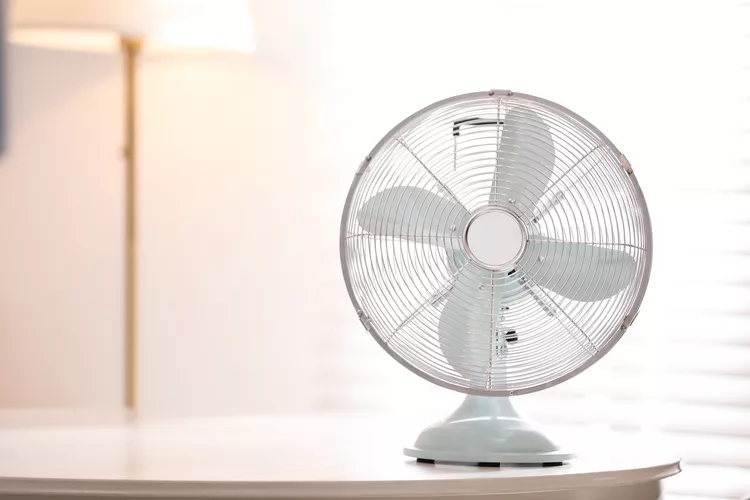
Flexible Placement and Usage
Some fans come in compact models that can sit on a desk or windowsill.
Others are larger, like tower fans, which have a slim vertical design to save floor area.
This flexibility allows you to move the fan to the exact spot where you feel it is needed the most.
You can place it near your work desk, bed, or even in your kitchen while cooking.
Because they are easy to lift, you can bring them along for backyard activities or picnics if you have an accessible power source.
Storing Fans
A large AC unit or radiator system usually takes up a fixed amount of space.
Fans, on the other hand, are less bulky and more versatile.
If you need to store them during colder months, you can unplug them and put them in a closet or under a bed.
Some fans have foldable stands or can be disassembled for easier storage.
This also helps maintain cleanliness since dust on unused devices can be a problem.
Reducing Clutter
Since fans do not require ducts or tubes, you have fewer components to deal with.
This means you keep floors and walls clear.
If you love a clean look in your living area, a small, streamlined fan does not disrupt the overall style.
You can find designs that match modern, minimalist, or even vintage aesthetics.
That simplicity often appeals to people who want a flexible solution without extra complications.
Adaptability in Different Settings
Fans work in bedrooms, living rooms, and even garages.
If you need circulation in a workshop or a small office, you can easily set up a fan without the hassle of major installations.
This adaptability means you do not need separate cooling systems for each area you use.
You carry the fan to your current location and place it in a suitable spot. It offers immediate relief.
That convenience is what makes fans a popular choice across many households.
5. Versatility and Aesthetic Value
Does your room look dull?
A stylish fan can add personality while keeping you cool. Fans come in many shapes, colors, and designs.
A modern fan can have multiple speed levels, timers, and even remote control.
These added features make them functional in hot and cold weather.
Some fans also look sleek and can enhance your room’s appearance.
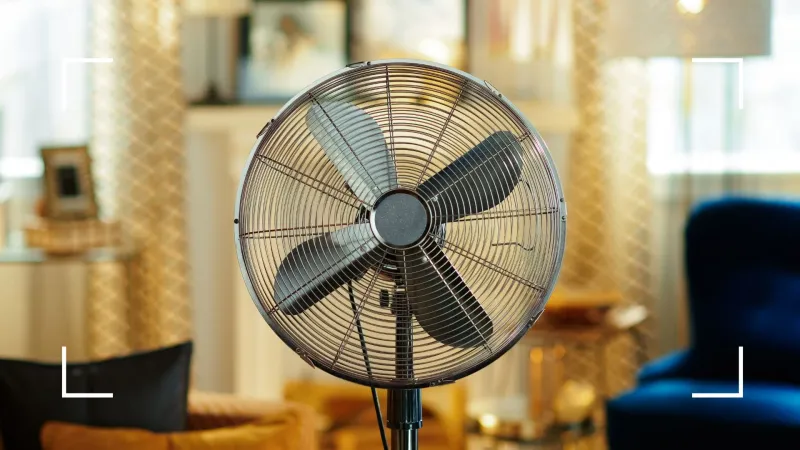
Decorative Appeal
Fans are no longer just functional gadgets.
Many brands produce decorative models that serve as a statement piece in a room.
You can find fans with wooden blades, metallic finishes, or unique color palettes.
These can match rustic, modern, or minimalist themes.
A fan that suits your style can be a conversation starter.
When placed strategically, it might even become part of the interior design focal points.
Seasonal Adaptability
In warmer months, you can use high fan settings or oscillation modes to keep air flowing.
In cooler months, some fans have a reverse mode that directs warm air downward if you have a heated room.
This feature is common in ceiling fans, which can push rising hot air back down to occupant level, helping reduce heating costs.
If you like fresh air year-round, a fan that can switch between cooling and gently redistributing air might be perfect for you.
Table: Fan Features for Different Needs
| Feature | Ideal Use Case | Benefit |
|---|---|---|
| Oscillation | Spreads airflow across a wide area | Cools multiple spots in a room |
| Timer | Set fan to run for a fixed period | Saves energy and offers convenience |
| Remote | Control from across the room | Adjust speed without getting up |
| Reverse Mode | Ceiling fans in cooler weather | Moves warm air down, saves heat |
| Variable Speeds | Offers multiple airflow settings | Suits personal comfort levels |
Modern Smart Controls
Some fans can be integrated into smart home ecosystems.
You can connect them to your phone or voice assistant.
This allows you to control speed, oscillation, or timing without pressing physical buttons.
Such features boost convenience.
You might schedule your fan to turn on before you get home, so the room feels comfortable when you arrive.
This is beneficial if you want an advanced setup, but even simple fans can still look great and do the job effectively.
Matching Interiors
Fan designs come in sleek and futuristic styles, traditional finishes, or fun and bright colors for children’s rooms.
This can transform a dull corner into a lively, functional space.
Some fans have LED lights built in for a dual-purpose fixture.
When you select a model that complements your decor, you make the space more inviting.
It shows that practicality and good taste can go together.
Fans can be discreet or flashy, based on your preference.
Conclusion
Electric fans offer cool comfort, improve indoor air, save energy, and add style to any space. They are a simple way to stay comfortable and confident.
